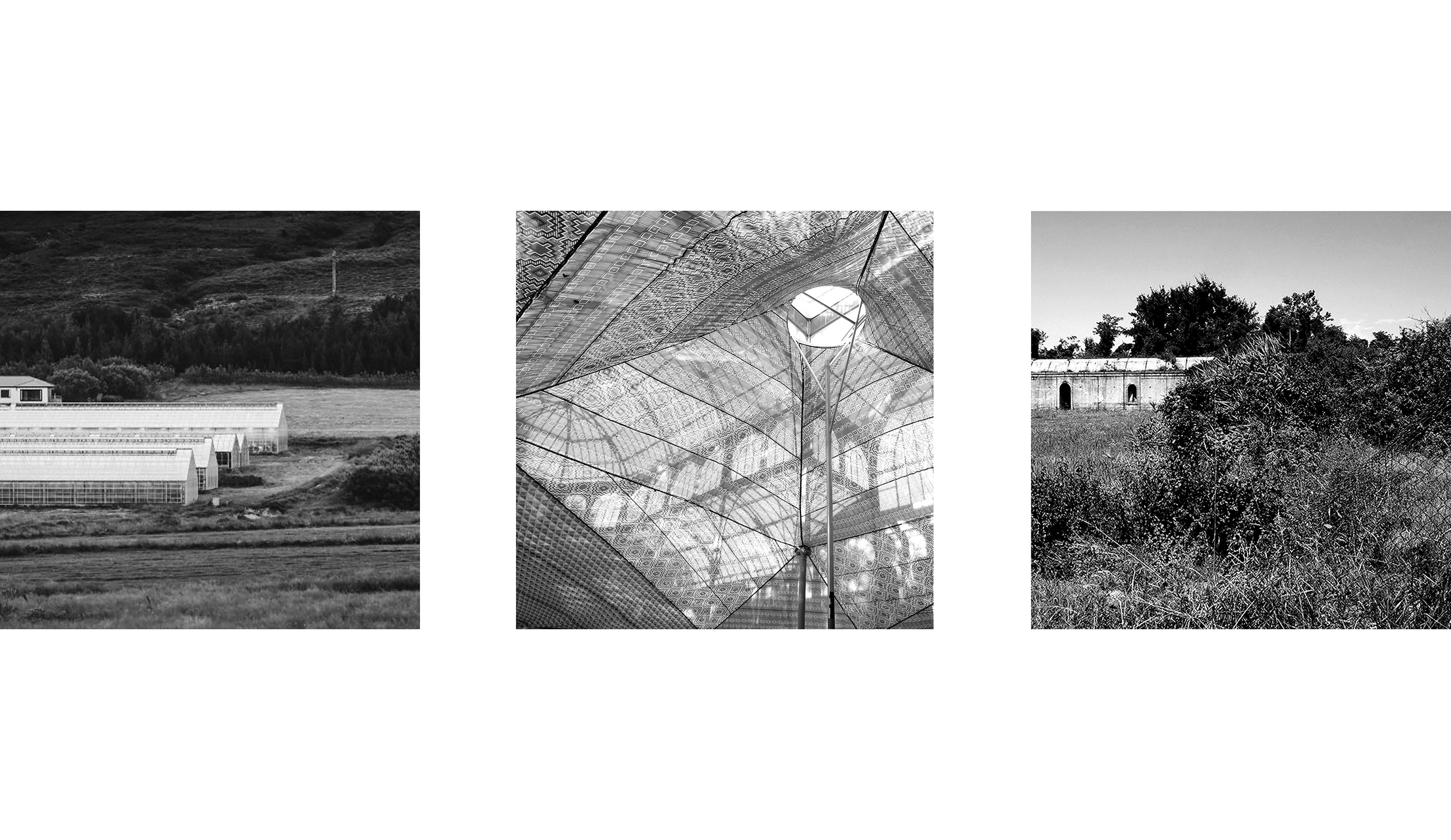
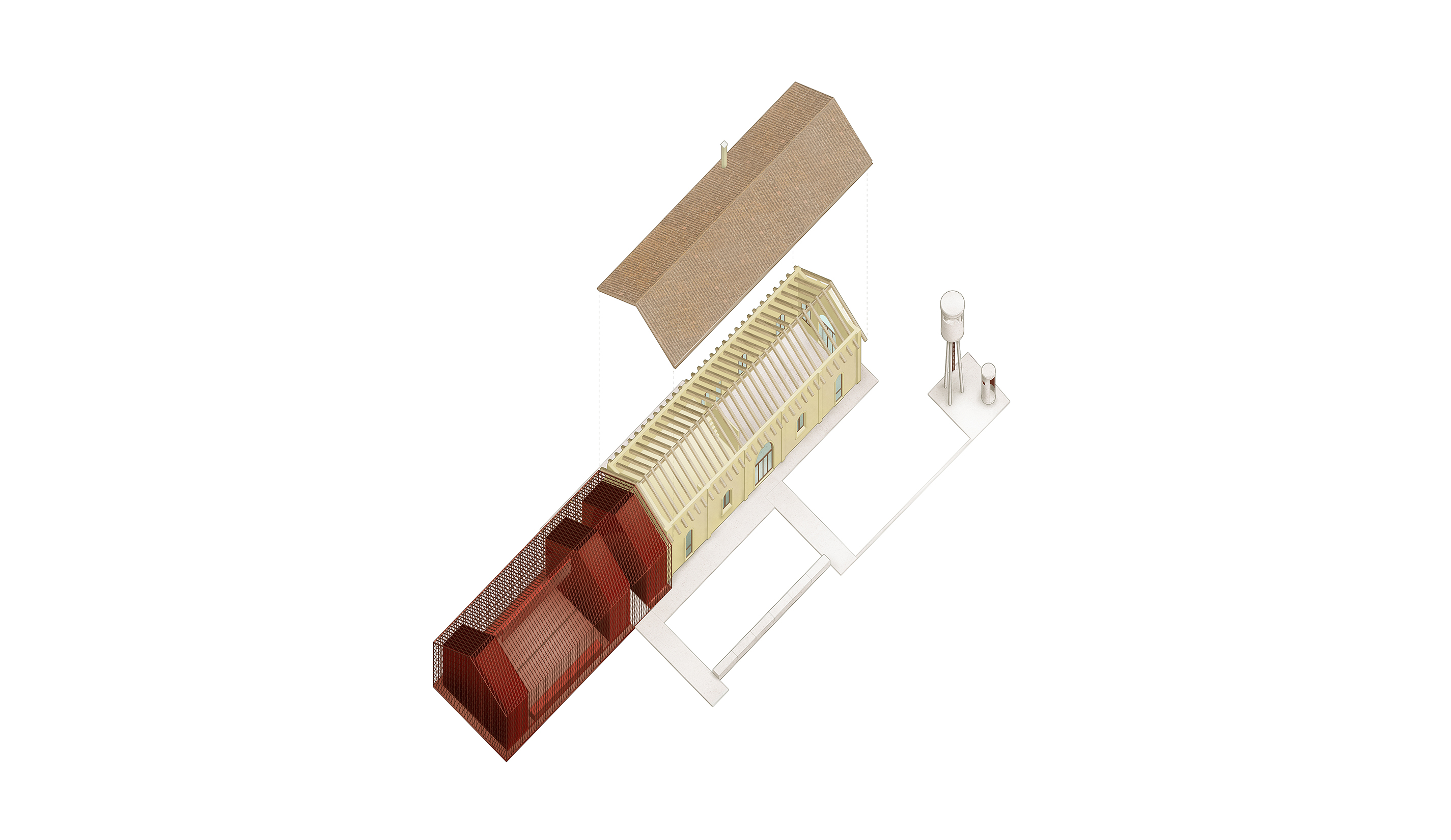
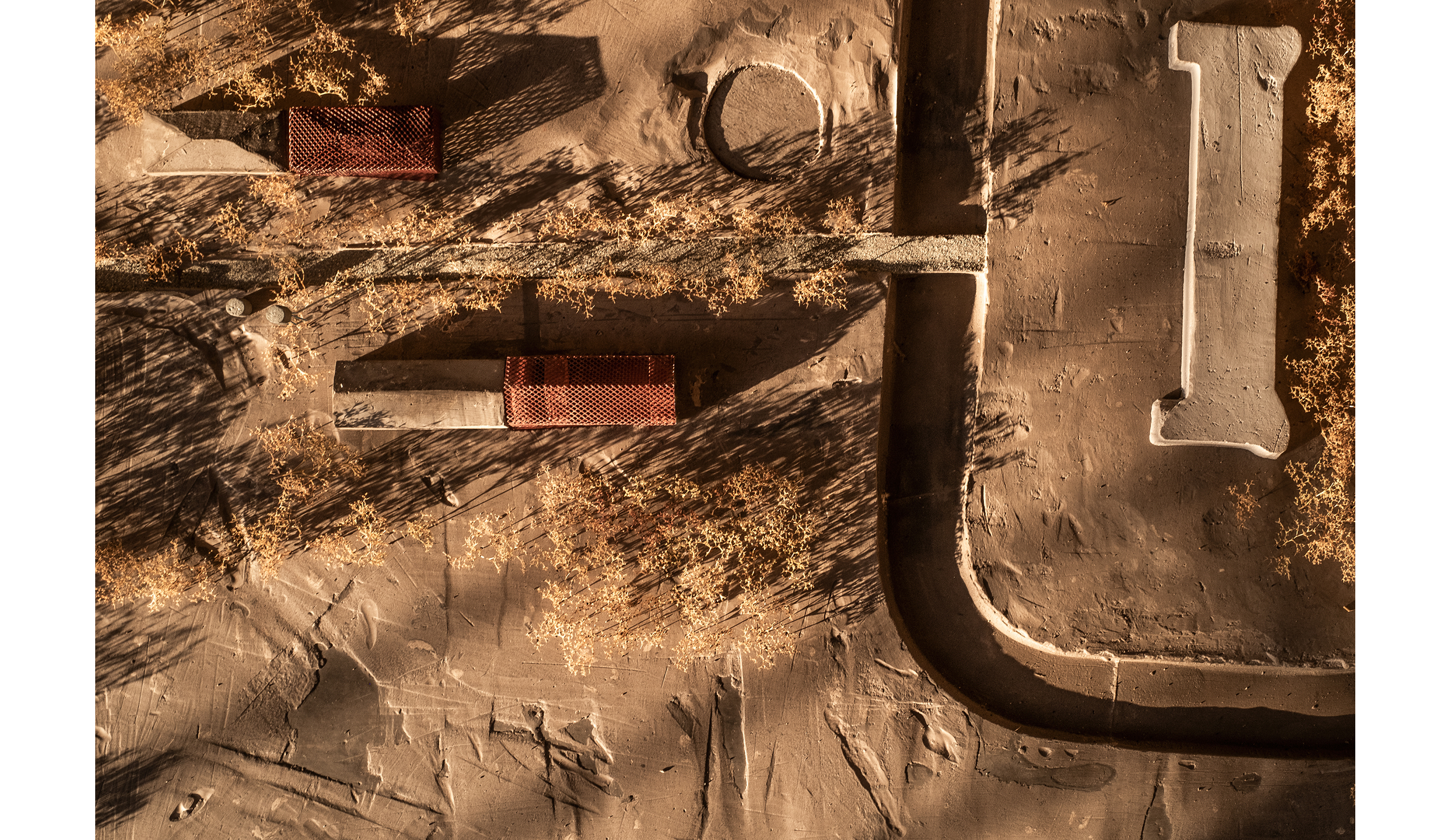
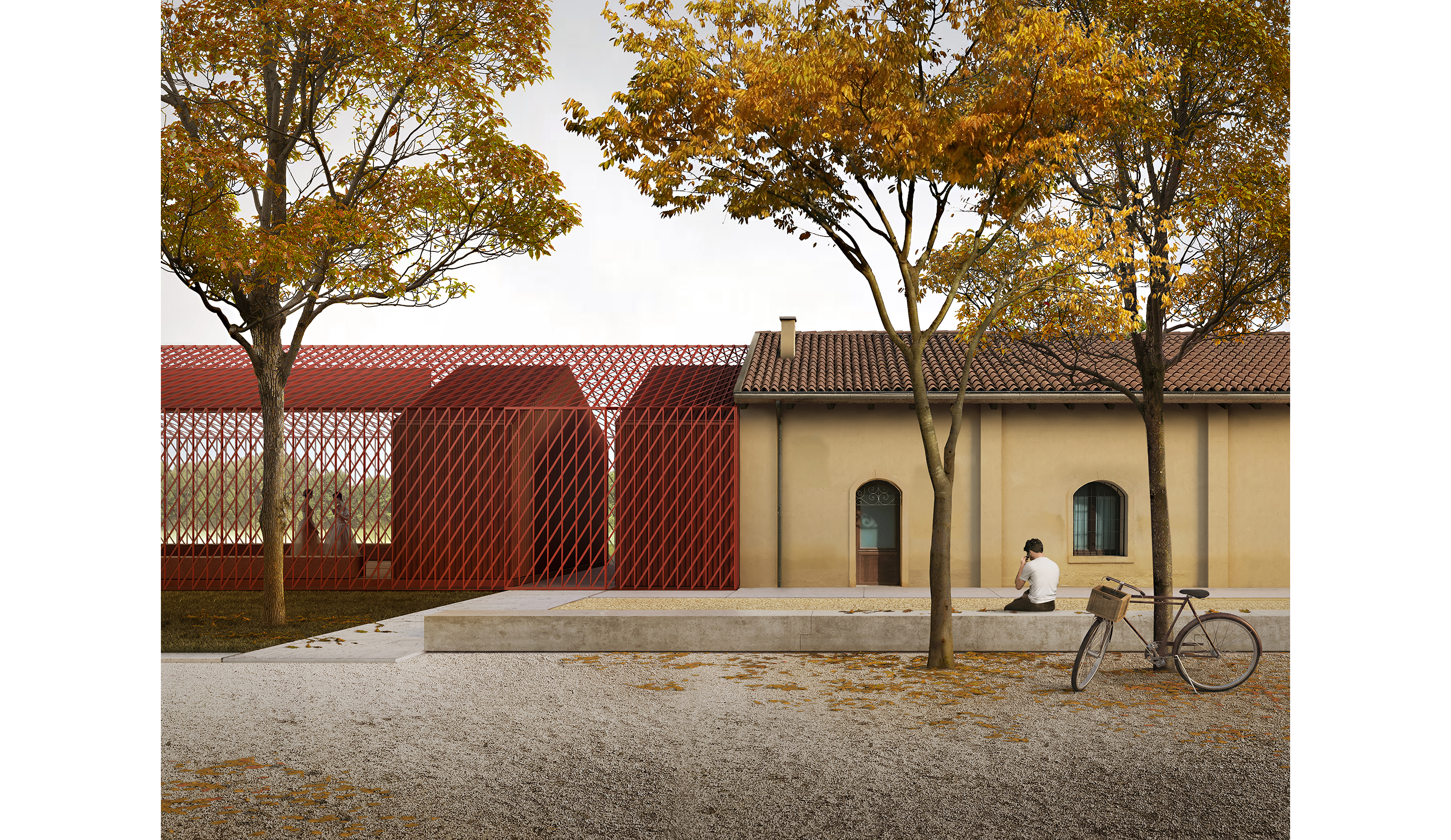
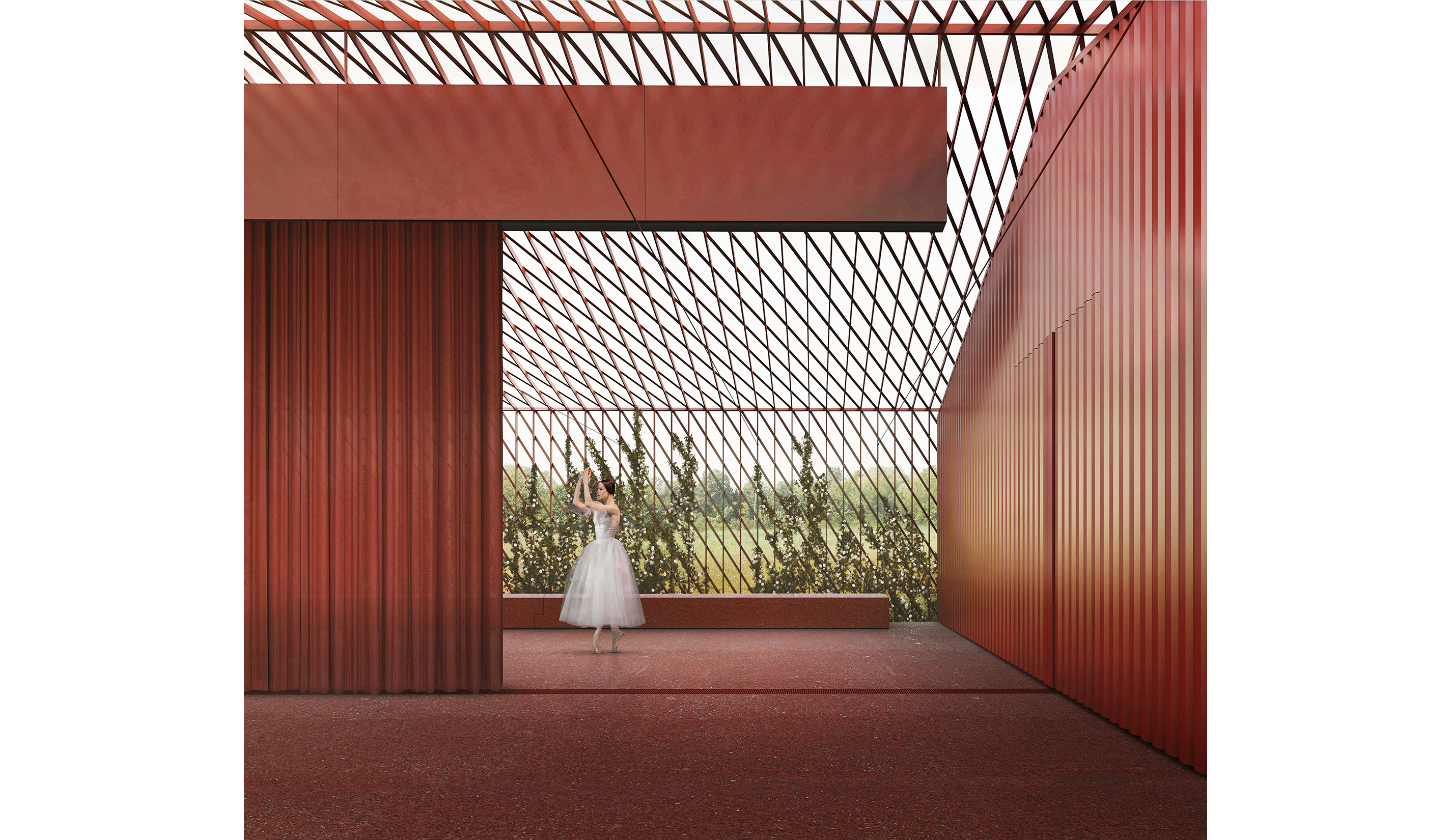
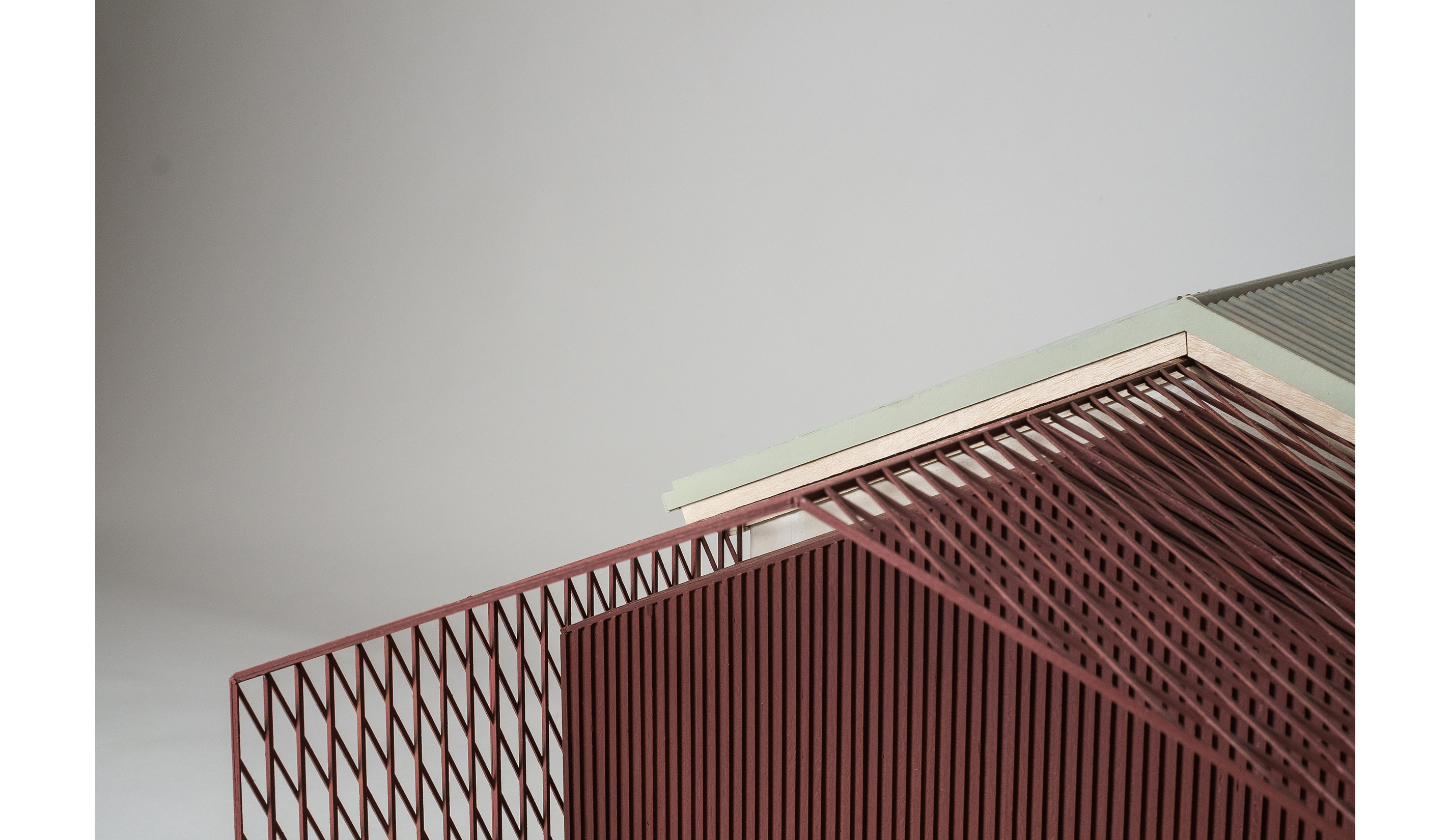
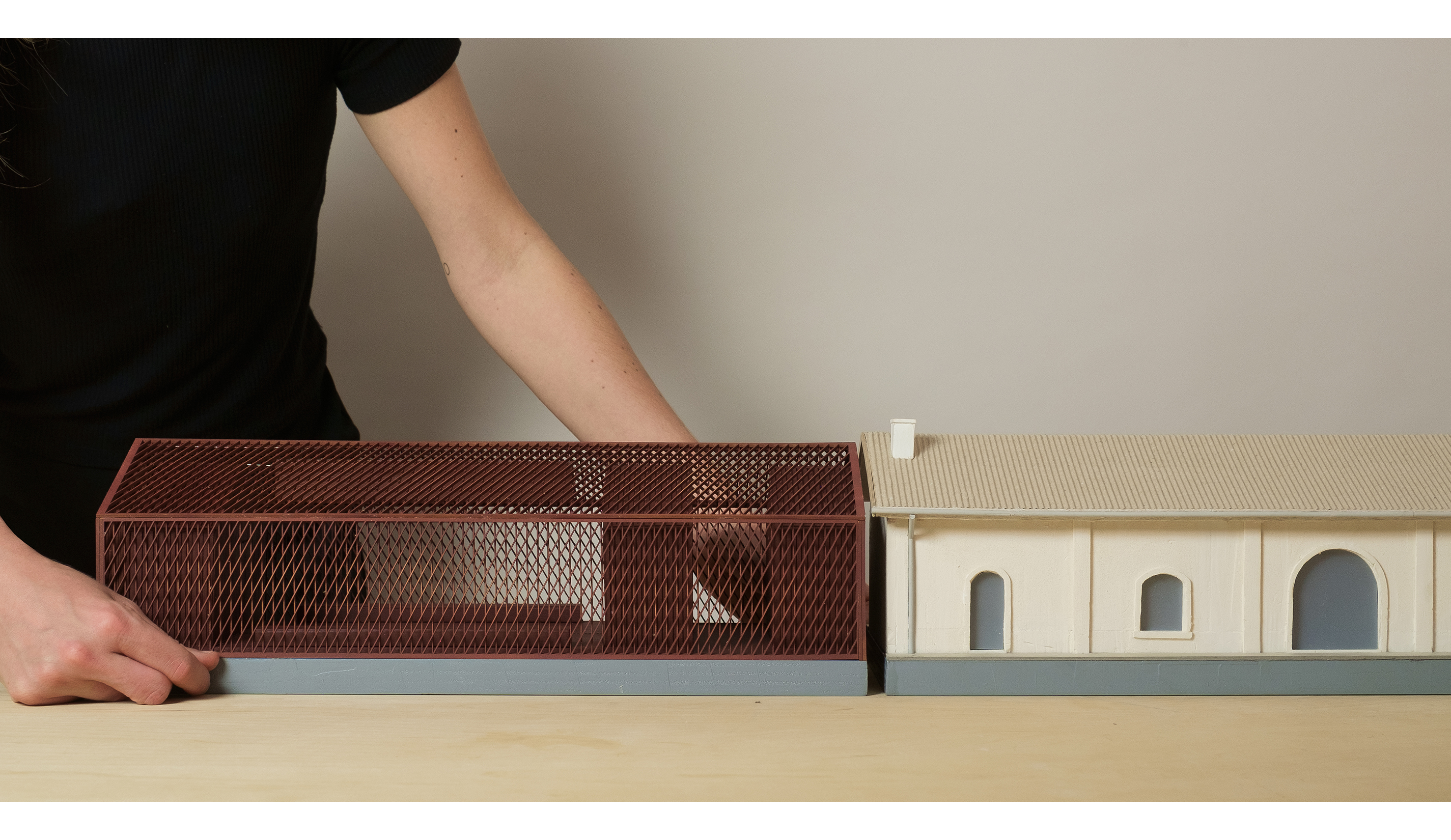
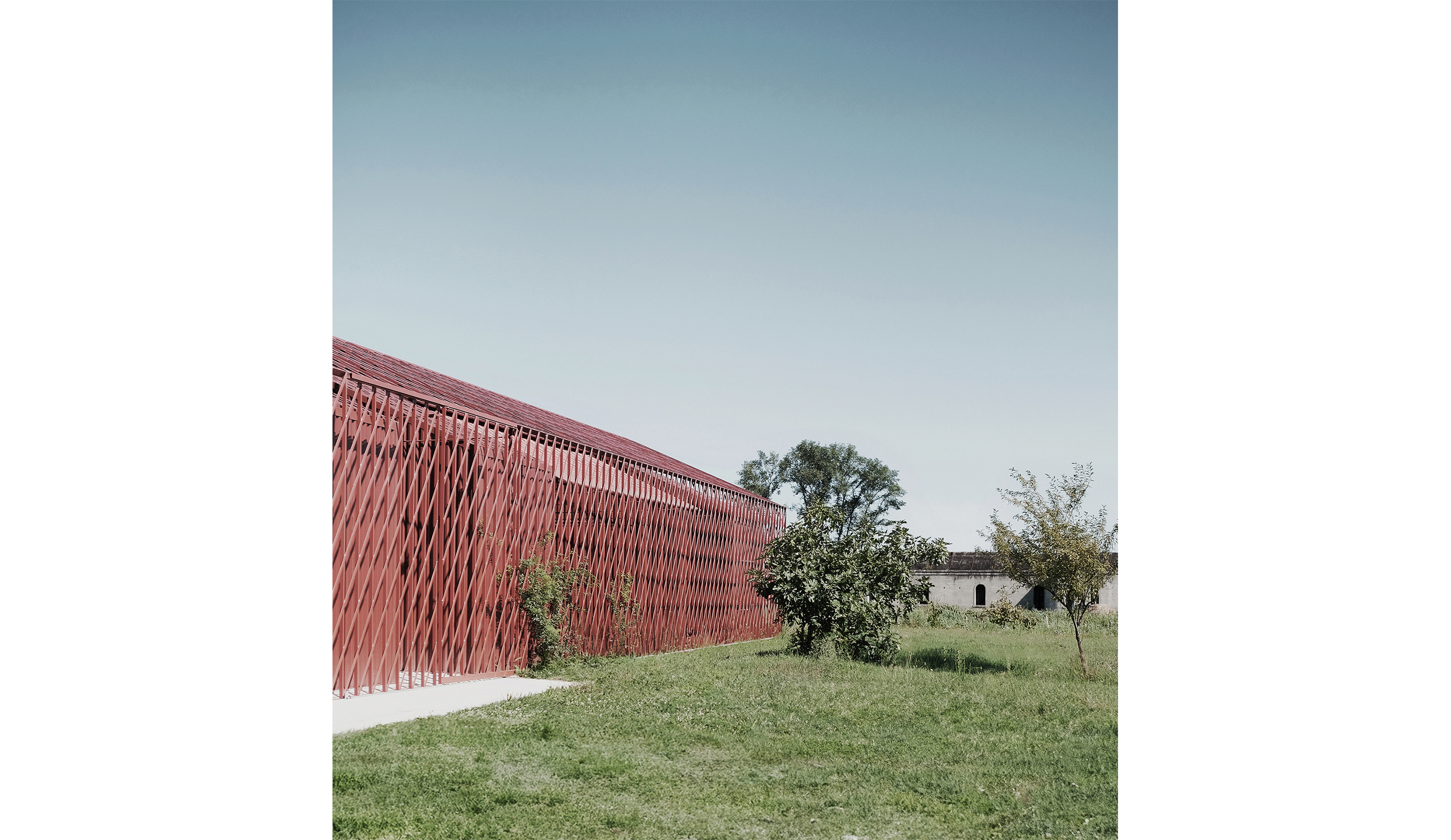
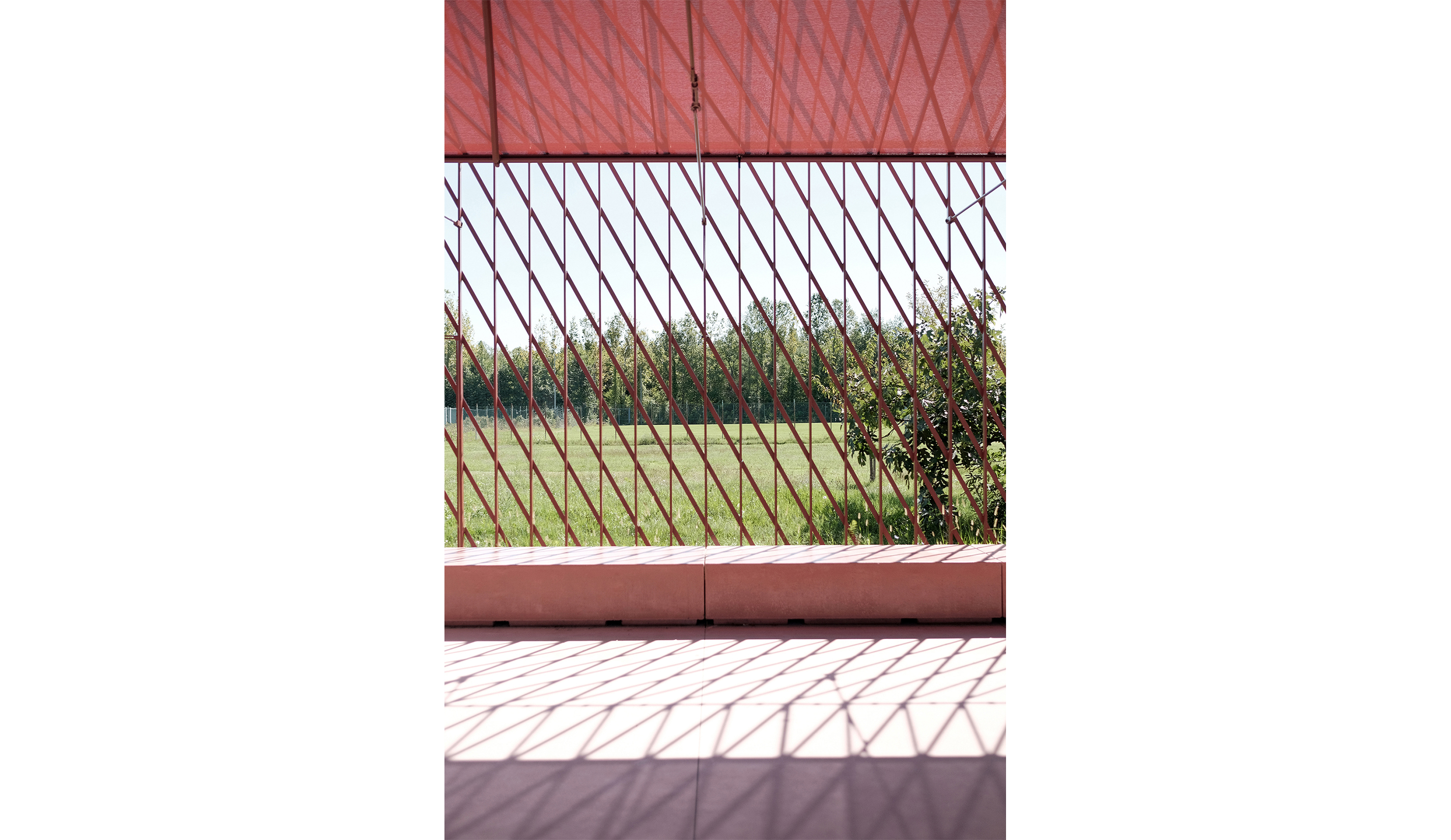
cosenz
Forte Cosenz is part of the cluster of fortifications present in the Venetian mainland once placed in defense of the Serenissima and which constitute a heritage of historical and naturalistic treasures. After the First World War, all the forts were transformed into weapons and ammunition depots and took on their current appearance, characterized by dense vegetation, especially internal, left to grow for mimetic purposes. Forte Cosenz is located on the bends of the Dese river snaking through the naturalistic area of the Bosco di Mestre. Within the intervention area we find 3 buildings: the main one, consisting of the imposing volume of the fort, and 2 smaller accessories located near the entrance to the area called Building "A" and " B ". The first phase of the project is aimed at the overall reorganization of the sector of building "A", characterized by a brick structure, articulated by the rhythm of the brick pillars supporting the roof with wooden structure. The operation involves the construction of an external pavilion, in continuity with the main volume, capable of solving the current architectural and functional criticalities by restoring a coherent and effective image to the delicate surrounding context. The intervention consists of a metal structure-building arranged in axis with the main volume, strengthening the organization of buildings "A" and "B" - parallel to the access path - without adding further figures to the area. It is conceived as a light volume of air, visually not opaque; a modular and serial system, equipped with a system of sliding roller curtains that allow the division and shading of the main space. The structural configuration recalls the configuration of Building "A" before the intervention, reduced to a ruin with its wooden truss framework exposed; it evokes the agricultural architecture of the greenhouses scattered in the surrounding countryside, the elongated conformation refers to the linear geometries of the vines. As with the fort, progressively colonized by wild and luxuriant nature, the new pavilion allows itself to be partially "invaded" by vegetation, in particular by climbing roses that root it to the ground, definitively tempering its presence in the landscape.
project team: Alessandro Tessari, Matteo Bandiera
project: Cultural Pavilion. Venice, Italy
status: Completed project
date: 03.2024
client: Regione Veneto